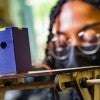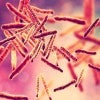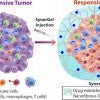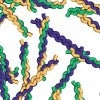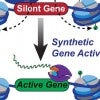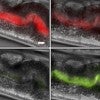Brain drain could give patients peace of mind
April 26, 2021
Pressure from excess cerebrospinal fluid on the brain is often relieved by surgically installing a shunt that carries the fluid to a reservoir. But when pressure in the reservoir itself is too high, the shunt needs a little help.
Touchless temperature made simple
April 21, 2021
Getting around during the pandemic often requires getting your temperature taken to check for COVID-19. A team of seniors at Rice’s Brown School of Engineering wants to make that practice more practical for facilities around the world.
Study could explain tuberculosis bacteria paradox
February 22, 2021
Tuberculosis bacteria have evolved to remember stressful encounters and react quickly to future stress, according to a study by computational bioengineers at Rice University and infectious disease experts at Rutgers New Jersey Medical School.
Laura Segatori named AIMBE fellow
February 19, 2021
Rice bioengineer Laura Segatori has been named a fellow of the American Institute for Medical and Biological Engineering.
Junghae Suh named AIMBE fellow
February 15, 2021
Rice bioengineer Junghae Suh has been named a fellow of the American Institute for Medical and Biological Engineering.
Collagen structures get the royal reveal
February 15, 2021
An algorithm by Rice University scientists predicts the structures and melting temperatures of collagen, the triple helix that accounts for about a third of the body’s proteins and forms the fibrous glue in skin, bones, muscles, tendons and ligaments.
New CRISPR tech targets human genome’s complex code
February 9, 2021
Rice bioengineers harness the CRISPR/Cas9 system to program histones, the support proteins that wrap up and control human DNA, to manipulate gene activation and phosphorylation. The new technology enables innovative ways to find and manipulate genes and pathways responsible for diseases.
Light flips genetic switch in bacteria inside transparent worms
December 22, 2020
Researchers from Rice University and Baylor College of Medicine have shown that colored light can both activate and deactivate genes of gut bacteria in the intestines of worms. The research shows how optogenetic technology can be used to investigate the health impacts of gut bacteria.


